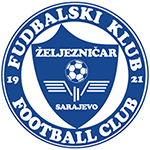Throughout the decades of its existence, the Club and the Youth Academy have produced a large number of top players.
We would like to mention that the following passed through our school: Ivan “Ivica” Osim, Mehmed Baždarević, Josip Katalinski, Drago Mišo Smajlović, Ilijas Pašić, Josip Bukal, Milan Ribar, Božidar Janković, Slobodan Janjuš, Dragan Kojović, Anto Martinović, Đemal Šerbo, Slobodan Kojović, Kasim Kokot, Tarik Hodžić, Dželaludin Muharemović, Blagoje Bratić, Hajrudin Saračević, Branimir Jelušić, Edis Mulalić, Bulend Biščević, Milomir Odović, Haris Alihodžić, Josip Čilić, Edin Sprečo, Edin Bahtić, Edin Ćurić, Adin Mulaosmanović, Edin Džeko, Admir Adžem, Fikret Mujkić, Duško Bajić, Zoran Samardžija, Hajrudin Đurbuzović, Ibrahim Šehić, Nenad Starovlah, Vlado Capljić, Suvad Katana, Zajko Zeba, Edin Cocalić, Amar Osim, Rade Bogdanović, Mario Stanić, Semir Štilić, Adnan Gušo, Armin Hodžić , Hadis Zubanović, Sead Kapetanović, Nermin Zolotić, Riad Bajić, Amir Hadžiahmetović…
Source: Sport
Date of issue: Saturday, December 26, 1981, page 11
Author: Milan Ždrale
Along with the jubilee – 60 years of FK Željezničar
Football school
The aces of Yugoslav and world football grew up in Grbavica. Željo’s football school was formed by coach Milan Ribar in 1960, relying on our own playing and coaching staff. Željezničar was at the top of Yugoslav football for twenty years. Even though sometimes the results were not as good as expected, the overall achievements were impressive. The position on the table is not the only measure of a club’s value. Željo also produced prominent national team players in seasons when they did not rank high on the table
Years of the Rise
The great rise of Željezničar began twenty years ago when the Blues started an extraordinary series that brought them to the first league competition. Smajlović, Osim, Matić, Radović, Dizdarević, among others, were heralds of Željo’s game, which filled the stadiums where the team from Grbavica played. Željo became a hit in our football in those years (1960-1970). Later, Željo was included in the group of champions of Yugoslavia and clubs that gained international renown.
How did Željezničar become one of our leading clubs? Relying on one’s own playing and coaching staff was a good orientation. The Blues chose that path a long time ago and still remain on it, striving to once again be at the very top of football in BiH. Sometime in 1960, when the great rise of Željezničar began, the Football School started operating in Grbavica. Milan Ribar came up with the idea of organizing new work with pioneers and juniors, and the Club accepted the idea. Ribar always fondly remembers those first steps:
“Željezničar,” says Ribar, “always worked with juniors. In the beginning, this work had no systematics: older, retired players worked with children who came to Grbavica. It should be said that this work was completely on an amateur level, and that it was significant because it produced several great players, among whom were Osim and Smajlović. In the summer of 1960, I suggested to the Club that we organize work with pioneers and that we have a unique unit, pioneer-junior.”
Who helped you realize that idea?
The coach of the first team was Branko Stanković. He liked my proposal and immediately accepted it. The president of the club back then, Rade Šković, also made a maximum effort to realize the idea of organizing the Football School. There were also different opinions then, there were also people in the Club who said that we do not need such work with pioneers and juniors.
Validation of values
Which famous footballers were in the first pioneer team of Željezničar?
In the group of many, Mithad and Fikret Mujkić, Edin Sprečo, and Hajrudin Saračević stood out. They later became prominent Yugoslav footballers and players of Željezničar. Janjuš, Janković, and Kojović joined our company later. Hadžiabdić, Bratić, and Bukal also joined us as youths.
Were those actually the beginnings of creating a championship team?
Yes! In the 1965/66 season, a young and super-talented generation was greatly tempted and managed to secure the first league status for Željezničar. It should be remembered that Željo played without Osim and Smajlović and started with a minus six points. We managed to stay in the league with 13 juniors! That is why I think it was an extraordinary success for a young team. It was a path as equal as winning the championship title.
The team led by coach Milan Ribar emerged, grew up, and asserted itself in Grbavica. Željo’s school of football produced champions of nine national team (“A”) selections and ten players in the youth national team. Players from that school (from Ribar’s “class”) played 97 games in the “A” national team. The best of them is Katalinski, who was the footballer of the year and a representative of Europe.
Milan Ribar laid the foundation for Željo’s football school. It was continued by Risto Bukvić, Josip Babić, Fadil Požegija, Mile Bunjevac, Jovo Radović, Vasilije Radović, Velija Bećirspahić, Duško Bajić, Vjekoslav Kranjc, Sulejman Kulović… After the championship days, Željo’s football school experienced a certain stagnation, which led to a crisis in results and leaving the first league. The crisis was short-lived, and new aces emerged in Grbavica – Odović, Baždarević, Čapljić, Baljić… Rade Paprica also established himself there. Even today, Željezničar has its main focus on its own playing and coaching staff, and the results are coming (Yugoslavia Cup final). It is realistic to expect that this team will again be at the very top of Bosnian-Herzegovinian and European football.










